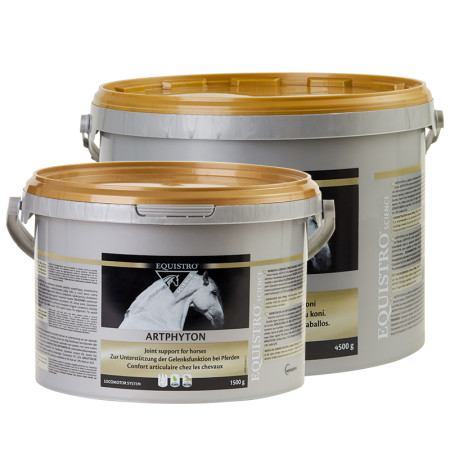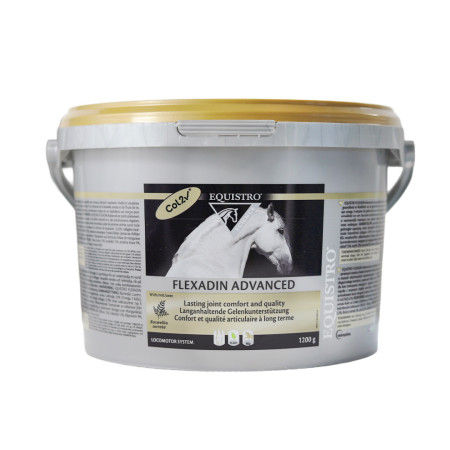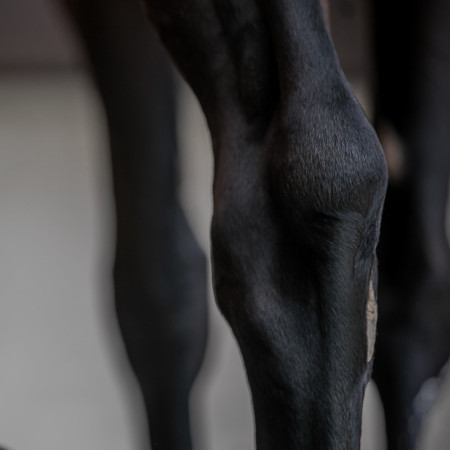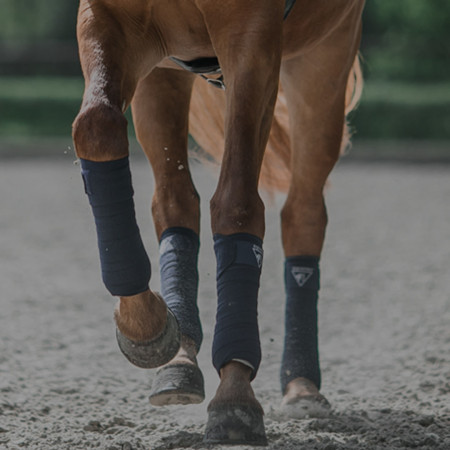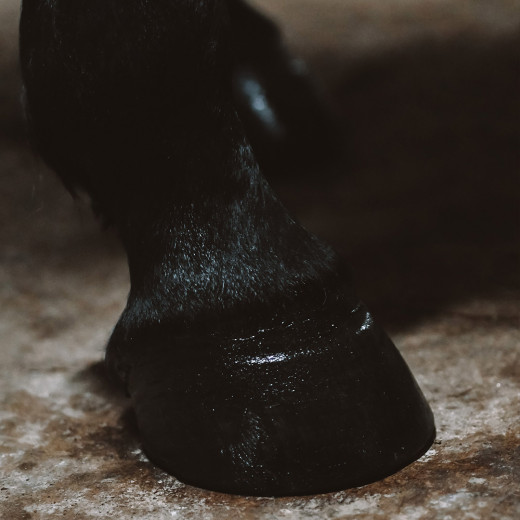
Laminitis
Anatomy of the foot
The foot of the horse consists of the third phalanx (bone) and the hoof that surrounds it. Contrary to what many people believe, the third phalanx is not supported on the bottom of the hoof; it is suspended in the hoof by means of two lamellae attached to each other in the manner of a "velcro", one of the membranes being bonded to the third phalanx, the other being bonded to the hoof. This system is normally very strong and supports several tens of kilograms at the level of each foot, or even more in motion, especially during reception of a jump (up to a ton per foot).
What happens in case of laminitis?
In case of laminitis, the inflammation causes a disengagement of the two lamellae which are no longer firmly fixed to one another. Because of the weight on the third phalanx, it gradually detaches from the hoof and "sinks" into the hoof. The anterior part (at the front of the foot) is generally touched first: the third phalanx detaches at this level and "tilts" forward. In the most severe cases, the disengagement takes place all along the phalanx and the third phalanx then sinks entirely into the hoof.
What causes laminitis?
Laminitis never appears alone, there is always a cause, that is more or less easy to identify.
Mechanical causes
Laminitis can be triggered by intense and prolonged physical activity on hard ground. Repeated shocks are then responsible for inflammation. It is called exercise laminitis and this cause is the most common in endurance horses.
Laminitis can also be caused by chronic overload. This is the case, for example, when a leg is fractured: to relieve the injured limb, the horse transfers its weight to the contralateral limb which is thus overloaded and can lead to laminitis. This is called supporting limb laminitis.
Food causes
These are the best known. They are due to an imbalance of the intestinal flora due to an abrupt change in feeding (increase in carbohydrates) either because of abnormal supply of cereals (the horse escapes and eats a bag of grain at night) or by turning out the horse without an adequate transition (soluble sugars contained in the spring grass). The intestinal flora does not have time to adapt to this new diet and the food ferments in the intestine and releases toxic substances that affect the vasculature of the foot.
Critical Illness
Lameness can be a complication of many serious diseases including severe colic, metritis (infection of the uterus), pleuropneumonia, or severe diarrhea. In these cases, toxic molecules pass into the bloodstream and cause a generalized inflammatory reaction (endotoxemia) that affects the vasculature of the foot.
Endocrine diseases
For a long time unrecognised, they are now thought to be the most frequent cause of laminitis. Hormones are molecules secreted by an organ of the body that act on one, or most often several, other organs. During hormonal dysregulation (or endocrine disease), the hormones are secreted in too great or too small quantity and this has varied consequences. The two most common endocrine diseases in horses are Cushing syndrome and metabolic syndrome.
Cushing's syndrome is very common in older horses (over 15 years old). It causes several symptoms, the most obvious of which are muscle wasting (muscle loss on the top line and fat belly) and hirsutism (long hair sometimes curly and that does not tend to fall in the spring). Cushing also often causes chronic laminitis with pain episodes. This disease is easy to diagnose with a hormone dosage (in the blood) and there is an effective treatment that must be given for life and is not allowed in competitions.
The metabolic syndrome resembles type 2 diabetes in humans: the body's cells lose their sensitivity to insulin and no longer know how to use glucose properly. These horses also tend to develop chronic laminitis with pain bouts. This syndrome is found primarily in overweight horses. Treatment essentially involves weight loss and regular exercise.
What are the signs of laminitis?
Except in cases of laminitis of mechanical origin , the problem generally affects the 4 feet, usually more severely in the front feet (as they support two-thirds of the weight of the horse). The first sign is therefore generally a shortened stride (the horse makes small steps) followed by difficulty/reluctance to move (it is said that the horse "walks on eggs") especially on hard ground. With the aggravation of pain, the horse may refuse to move or give a foot. At rest, the horse adopts a characteristic position which aims at limiting the pain by transferring the weight of the body on the hind legs (antalgic position). Finally, when the pain is too intense, the horse lies down and refuses to get up.
The horse with laminitis may also show other signs related to pain: loss of appetite, isolation from other horses, tremors, sweating, increased heart rate and respiratory rate.
It is possible to notice abnormal heat of the feet upon palpation and an increased digital pulse (pulsating blood in the arteries that irrigate the foot). It is also possible to feel a depression above the coronary rim. When the phalanx tilts, its extremity comes to bear against the tip of the fork and this point becomes very painful. If the laminitis is not controlled, the third phalanx can pierce the sole and the horse may even lose its hoof. The prognosis is then poor.
In case of chronic laminitis, a modification of the shape of the hoof (the wall becomes concave) and the characteristic horizontal striations on the hoof can be noted.
How to Diagnose Laminitis?
Clinical signs of laminitis are quite characteristic. Nevertheless, to confirm the diagnosis and evaluate the severity of the laminitis, X-ray is very useful. It allows to observe if the third phalanx has tilted forwards or if it has descended into the hoof, and the severity of these changes (measurements of angles and wall thickness). It also makes it possible to follow the evolution of the condition. A phlebogram is another examination that allows visualisation of the vascular network of the foot.
How to treat a laminitis
Since laminitis is most frequently secondary to another condition, it is essential to seek and treat the primary cause.
There is no specific treatment for laminitis. The purpose of the treatment for acute laminitis is
1 / to control the pain
2 / to limit the aggravation
For this, non-steroidal anti-inflammatory drugs are generally used to relieve pain. It is also advisable to put the feet in ice using special boots with a cooling system, or for want of anything better with bags of crushed ice that are replaced regularly. The horse is confined in a comfortable space with a deep litter. It is recommended not to move the horse during the acute phase.
Similarly, it is recommended not to take the shoes off the horse during the acute phase. On the other hand, it is possible to relieve tension on the third phalanx by lifting the back of the foot with heel wedges.
In the case of chronic laminitis, the management essentially involves farriery and the treatment of the endocrine disease if necessary.
Lameness is therefore a serious condition which should be avoided whenever possible. For this, early detection and treatment of endocrine diseases (frequent in old horses in particular) are recommended.
Dr. med. vet. Julie Dauvillier

